Here are major software downloades provided by the group in approximate chronological order. Annotation with each will provide some guideance about which we consider to be current and relevant versus those that are still provided but for more archival purposes.
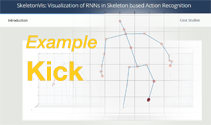
A visualization of RNNs in Skeleton based Action Recognition (SkeletonVis)
The visualization of RNNs provided by the Skeleton based Action Recognition Toolkit provides insights into models embedded in Recurrent Neural Networks in the domain of skeleton based Action Recognition. Using two primary methods for visualizing the properties learnt by a trained LSTM Network, namely, Sensitivity analysis and Activation Maximization, we present case studies on datasets commonly used for Action Recognition. Additionally, users can upload their own models and visualize their trained models.
Last updated August 30, 2019.
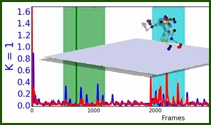
Generalized Curvature Analysis Toolkit (GeCAT)
The Generalized Curvature Analysis Toolkit (GeCAT) is useful for estimating generalized curvatures of curves lying in an n-dimensional space. As GeCAT calculates the curvatures using a curve localized SVD approach, it is a robust alternative to numerical differentiation for estimating curvature in high dimensions and works well even in the presence of noise. GeCAT segments pose streams into motions without knowing the set of motions in advance.
Last updated May 30 2018.
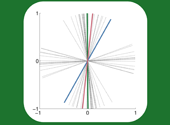
Subspace Mean and Median Evaluation Toolkit (SuMMET)
The Subspace Mean and Median Evaluation Toolkit (SuMMET) is a Matlab-based software package. There are two parts to the download. The first is the core Matlab code used to compute the Karcher mean, the L2-median, the extrinsic manifold mean, and the flag mean for collections of linear subspaces. The second part includes datasets and associated Matlab scripts that will reproduce results from the CVPR 2014 paper.
Last updated June 24 2014.
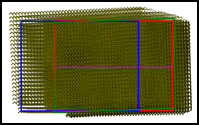
Robust Staged RANSAC Tracking
The Robust Staged RANSAC Tracking algorithm is useful for stabilizing video from a handheld camera. It is particularly well suited to the handheld video in the Point-and-Shoot Face Recognition Challenge where there is distinct camera motion following a person and yet for much of the video much of the scene background remains in view. The goal of this algorithm is to generate a new video where the background becomes fixed as though the camera had been locked down on a tripod.
Last updated February 28 2014.
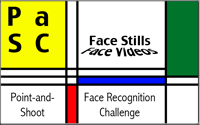
PaSC Software Support Package
CSU distributes a package of software for working with the Point-and-Shoot Face Recognition Challenge. This software comes in two forms, a completely self contained virtual machine and source code. Both distributions include meta-data useful for working with PaSC. They also include everything needed to run the CSU provided baseline algorithms and to generate ROC curves.
Last updated June 11 2013.
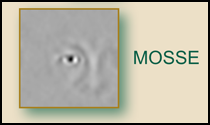
Optimized Correlation Output Filters Toolset (OCOFTools)
The Optimized Correlation Output Filters Toolset (OCOFTools) is a software package offered for those intersted in experimenting with David Bolme's Optimized Correlation Output Filters. This work is summarized in David Bolme's Dissertation as well as CVPR papers from 2009 and 2010. Be aware that Colorado State University has a patent covering the filter construction technique: the code is available for non-commercial research and education purposes only. License details are availble through the download page.
Last updated October 10 2012.
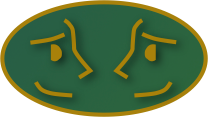
The 2011/2012 Face Recognition Baselines
This release was prepared to support the Good, Bad and Ugly (GBU) Challenge problem. More information about the GBU Challenge may be found in An Introduction to the Good, the Bad, and the Ugly Face Recognition Challenge Problem and at the NIST Site. In terms of what is most current, the PaSC is a more recent and better challenge problem for most purposes. However, GBU remains a challenging face recognition problem with amble opportunity for the community to benchmark improvement.
Last updated August 7 2012.
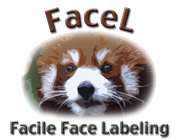
FaceL
FaceL is a simple turnkey demonstration of live face recognition over video. It is constructed to work with video feeds from laptop cameras and webcams. It is designed to be easily trained for up to about 6 people and serve as a demonstration of technology largely for educational purposes. Unfortunately, the turnkey version form Mac OS is not compatible with mopre recent releases of OS X. With appropriate knowledge of Mac OS or Windows FaceL can still be installed from the source distribution and run successfully. However, as it is based on older versions of Python and OpenCV it should not be viewed as trivial to install.
Last updated September 21, 2009.
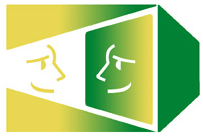
Evaluation of Face Recognition Algorithms
This system was our first major effort at releasing a turnkey series of face recognition algorithms along with evaluation support softwared. As of now, 2014, it is eleven years old and still being downloaded by some. As an educational tool we believe it can still be of value. The associated information concerning evaluation of algorithm using the original FERET protocol may be of use to anyone wishing to replicate much earlier experiments on arguably the first major face recognition challenge problem. The algorithms themselves in this package are dated and should not be taken as meaningful benchmarks of modern algorithm performance.
Last significant update May 2003.